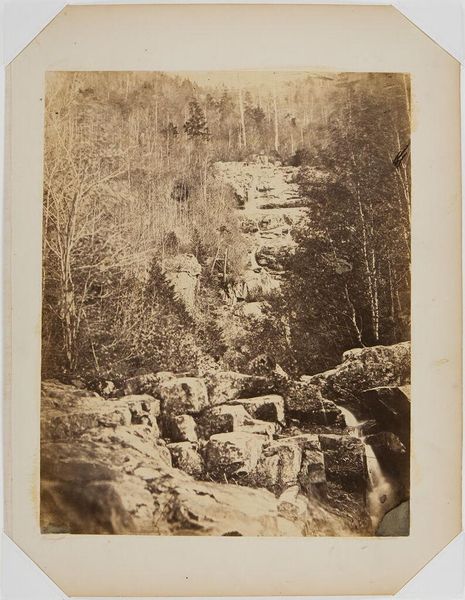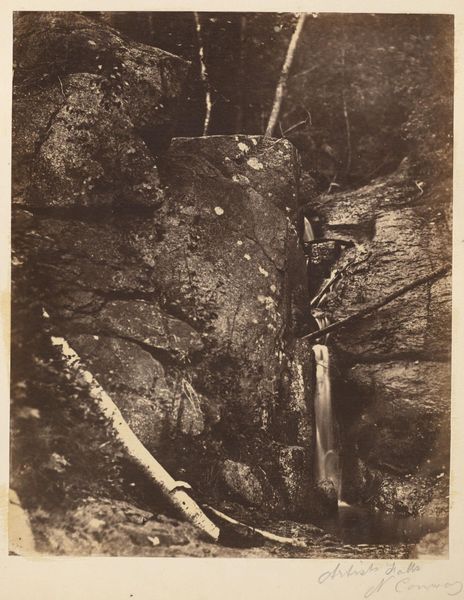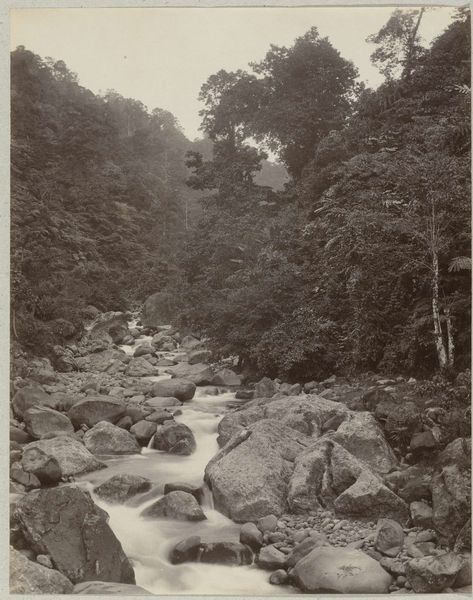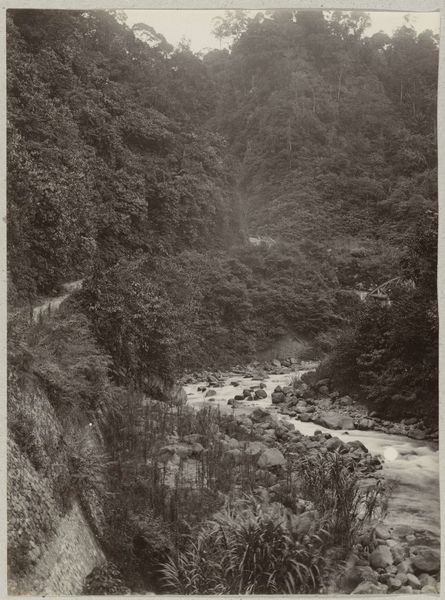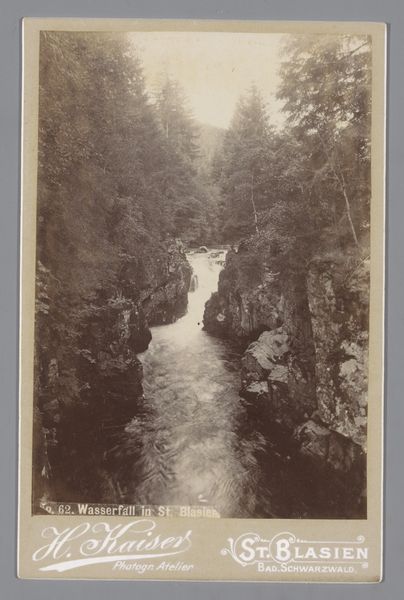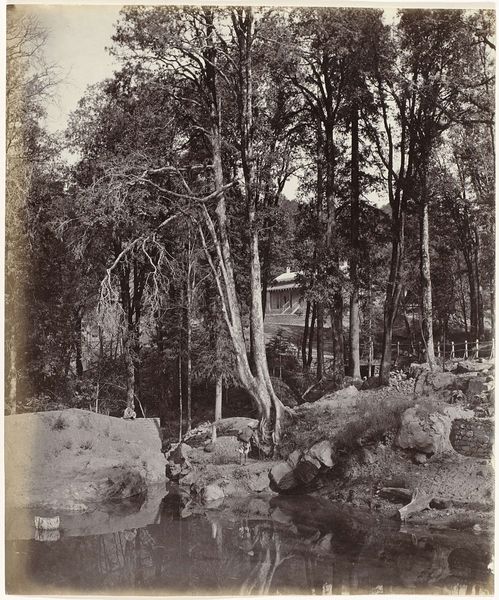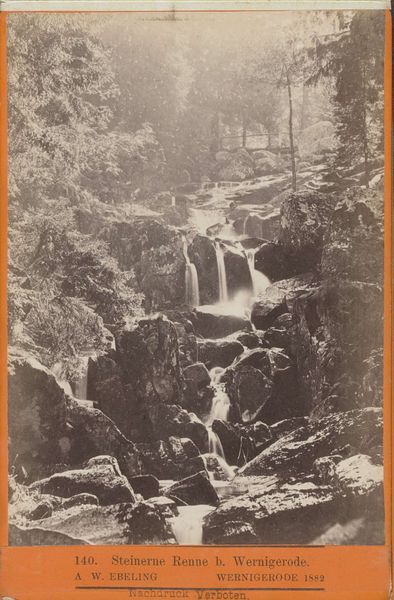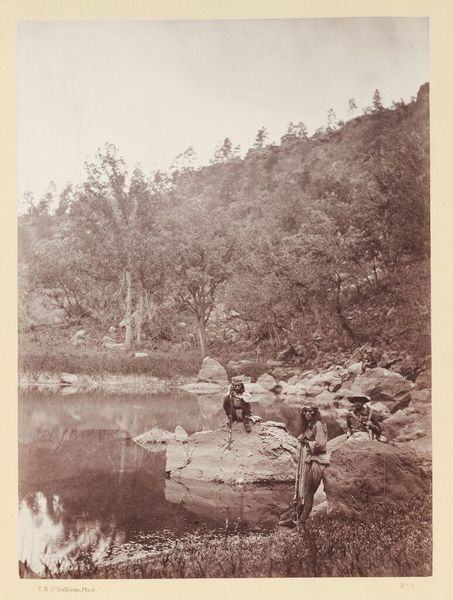
Dimensions: image: 30.82 x 24.3 cm (12 1/8 x 9 9/16 in.) mount, original: 39 x 30 cm (15 3/8 x 11 13/16 in.)
Copyright: CC0 1.0
Curator: John Adams Whipple's "Cascade Falls, Jackson" presents us with a fascinating study in early photographic techniques and landscape representation. Editor: It feels melancholic, almost like a dreamscape fading at the edges. The rocks jut out aggressively, yet the overall tone is subdued, muted. Curator: Absolutely. Whipple was at the forefront of American photography, experimenting with processes that would eventually democratize image-making. He likely used the mammoth plate process for this, producing a single, unique image. Editor: There's something about the scale, too—it’s intimate despite depicting such a grand natural scene. It makes me wonder about the labor involved. Transporting those plates and equipment must have been a feat. Curator: Indeed. The wet plate collodion process demanded immediate development, meaning a portable darkroom was necessary on location. This photograph represents a convergence of industry, leisure, and the romantic ideal of nature. Editor: I can't help but see a metaphor here too. The relentless flow of water, the enduring strength of the rocks. It whispers of time, change, and the quiet resilience of the earth. Curator: A beautiful interpretation. Considering the economic conditions of the time, it's interesting to reflect on how Whipple's landscape photography became accessible to a wider audience through print reproductions. Editor: Seeing this image now, it’s like catching a glimpse of a world both distant and strangely familiar, a potent reminder of our own impermanence within the larger landscape.
Comments
No comments
Be the first to comment and join the conversation on the ultimate creative platform.

